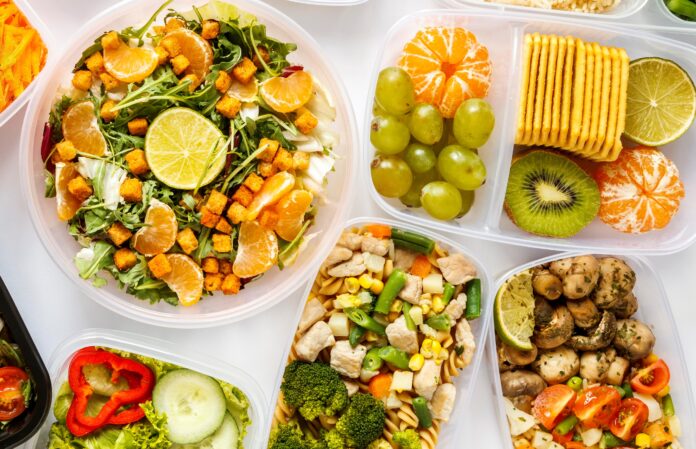Nutrition goals aren’t the same for everyone. These tips, however, may help you personalize your new eating habits:
Include a variety of nutritious foods
Incorporating all food groups—fruits, vegetables, grains (preferably whole grains), proteins and dairy—into your diet “helps ensure you are meeting your nutritional needs,” says Margaret Ifarraguerri, a clinical dietitian at Sinai Hospital of Baltimore.
It’s generally recommended that you eat five servings of fruits and vegetables a day. “I like to encourage people to have fruit with breakfast, such as eggs with toast and a side of berries, and vegetables with lunch, like a sandwich with a side salad, as well as vegetables with dinner, for example chicken breast with brown rice and steamed vegetables,” Ifarraguerri says. “I also like to encourage eating fruit and vegetables for snacks, such as an apple with peanut butter and celery or carrots with hummus.”
Skip processed foods?
Regarding processed foods, “I think it depends on what you are getting and how often you are getting it,” Ifarraguerri says.
“I think there are some processed foods that are OK to have. I also think it’s OK to consume these foods in moderation. Fresh is always better, but I understand it’s not always practical,” she adds.
Avoid sweets (cookies, Pop-Tarts, etc.) and foods high in fat and sodium, such as TV dinners and canned ravioli/spaghetti. “I would recommend snacks such as plain or lightly salted popcorn, whole grain crackers and granola bars, preferably ones without candy,” Ifarraguerri says.
Savor each bite
Ifarraguerri says, “We as dietitians like to emphasize mindful eating by trying to eliminate distractions when eating, such as while watching TV, and taking time to enjoy food.”
Plan ahead
Planning out recipes for the week and making a shopping list before you go to the store can help prevent you from buying junk food or going out to eat last minute and choosing unhealthy foods.
Learn to create new meals
Adopting healthier eating habits doesn’t mean that your meal prepping can’t be adventurous. Don’t be reluctant to try out new flavors and foods with healthy recipes.
“I like to encourage people to keep a variety of salt-free spices in their cabinet and try to make healthy swaps whenever they can. For example, you can swap out sour cream for low fat Greek yogurt,” Ifarraguerri says.
Check the labels
Looking at nutrition labels can help you make informed decisions when shopping for food.
“Pay attention to the serving size and calories per serving. Look foods that are low in saturated fat, 5% daily value or less, as well as added sugars. You should strive to gets foods that are high in protein and fiber,” Ifarraguerri says. “Also, be on the lookout for trans fat. You’ll know something has trans fat when you see ‘partially hydrogenated’ on the ingredients list.”
Consult a registered dietitian
Remember, we all have unique goals and nutrition needs. If you’re unsure about certain diet changes you’re contemplating, ask your doctor for a referral to see a dietitian. “A registered dietitian can give you personalized nutrition advice to meet your goals,” Ifarraguerri says.
For information on services offered by LifeBridge Health, including specialty care and community events, visit lifebridgehealth.org or call 410-601-WELL.
Story Credit: Newswise/Lifebridge Health
Photo Credit: freepik



































